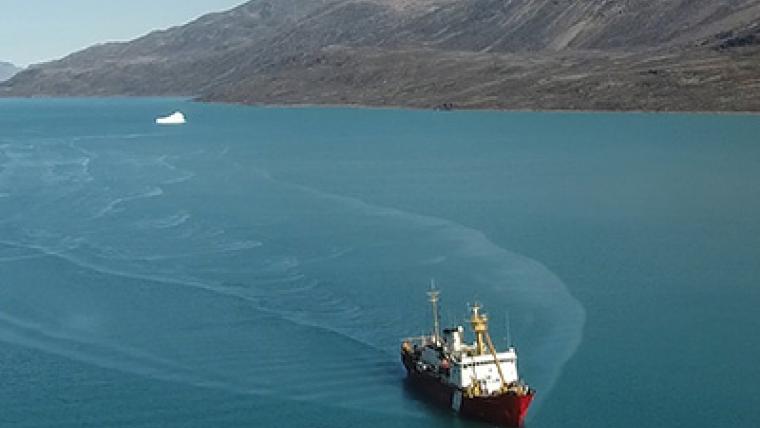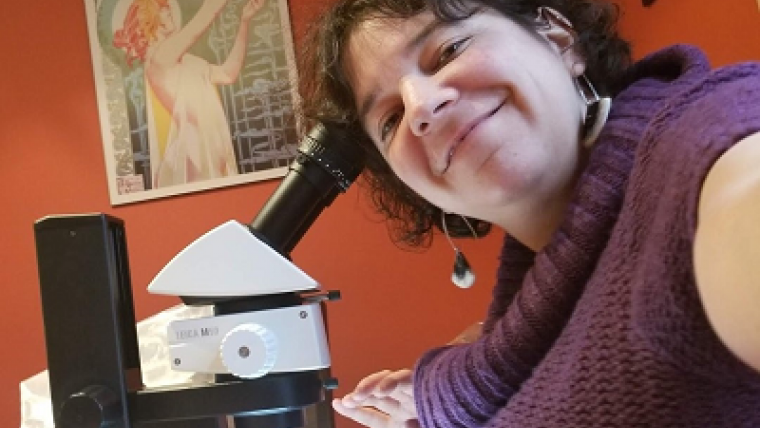A mystery at the core of Canada’s western redcedar
By Vanessa Greebe, Science Outreach, Pacific Region Communications

Cosmin Filipescu among the young cedars growing in the Pacific Forestry Centre greenhouse
Canada has the world’s largest stock of standing western redcedar, but this once-dominant species — Thuja plicata, found mostly along British Columbia’s west coast and in the province’s interior — is showing disturbing signs of distress. After a few years of very dry conditions, trees on lower-elevation sites in eastern Vancouver Island are slowly dying. Scientists at the Pacific Forestry Centre are trying to get to the root of the problem.
“Western redcedar is such a unique and iconic species,” says Cosmin Filipescu, a Natural Resources Canada (NRCan) research scientist in forest ecophysiology with the Canadian Wood Fibre Centre. He’s part of a working group that includes scientists and representatives of First Nations, industry, research institutes, universities and government who meet regularly to share their knowledge of this significant and widely used species.
An imposing and impressive evergreen
“Redcedar is a very valuable species, with high economic, social and ecological importance,” says Cosmin. They can live more than 1,000 years and grow to be nearly 60 metres tall. The trees themselves are commonly featured in landscaping and used as an easy-care, attractive garden hedge. Its wood is a prized building material used in high-end homes and is treasured by First Nations, who have long used it to make canoes, paddles, totem poles, tools, boxes and other items. In total, the species represents nearly 20 percent of B.C.’s coastal forest harvest, generating more than $1 billion each year.
These giants are highly resistant to most insects and diseases. But they also have a high incidence of rot, caused by a fungus that eats the tree base internally — which also happens to be the most valuable part of the tree. Many different fungi are capable of affecting them, generally beginning when the tree is between 20 to 40 years old. While this disease does not kill the tree, its effects may be compounded by severe or prolonged drought and greatly reduce the cedar’s economic value.
Surprisingly little is known about the species
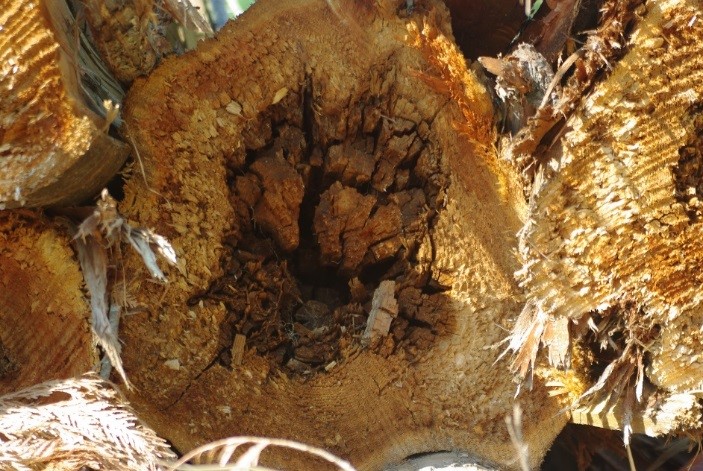
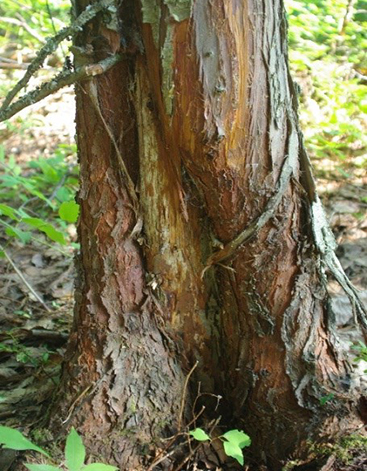
Rot at the base of a mature cedar tree and bark deformation hints at the presence of fungi.
The exact relationship between the tree and the fungus remains a mystery with more questions than answers: How does the fungus enter the tree? How fast does it spread? How long before economic damage occurs? And how to reduce the impact?
“Despite the importance of western redcedar, there’s actually surprisingly little that we know about it,” says Cosmin. “We’re working hard to provide scientific evidence that will guide the management and use of redcedar going forward.”
Two NRCan research studies are underway. One is focused on second-growth western redcedar and its response to different climates, while the second is looking at what genes are activated during drought conditions.
Study No. 1: some trees fare better than others
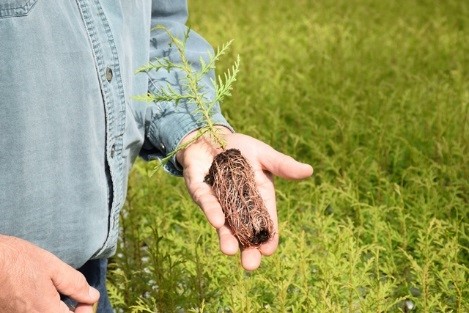
A Western Redcedar seedling. c. Taikoko Shoin Co. Ltd.
To better understand the effects of drought at a genetic level, researchers inoculate cedar seedlings with the fungus and grow them in the Pacific Forestry Centre greenhouses. Three years later, they examine the young trees, now nearly three metres tall, for evidence of fungus in the roots and to see if the pathogen has become established in the trunk and caused rot. As some trees fare better than others when exposed to fungal or moisture stress, comparing the gene expression of resistant trees can increase our understanding of the genetic mechanisms involved. Other considerations, such as physical wood properties and wood chemistry, also indicate which trees will survive drier conditions in the future.
Study No. 2: measuring the response of mature cedars
Meanwhile in B.C.’s dry interior, a fifty-year-old cedar plantation is providing insight into how mature cedars with damaging rot fare in stressful, drought-like conditions. NRCan scientists collect samples of infected trees to identify the gene expression responsible for the combined effects of decay and drought. This knowledge will help growers to find the best ways to manage cedar by identifying the seed best adapted to future climate conditions.
Researchers also want to find out whether cedar can be grown to be naturally resistant to deer browsing, disease and drought, and whether second-growth trees have the same quality of wood and disease resistance as their forebears. By investigating these and other questions, NRCan scientists are exploring ways to ensure western redcedar’s survival and manage the species as a sustainable, high-quality resource for future generations.
Find out more:
- Western Redcedar factsheet
- Research Report: An Economic Assessment of the Western Redcedar Industry in British Columbia
- The Canadian Wood Fibre Centre
- The Pacific Forestry Centre
- Ecology of western redcedar (Thuja plicata): Implications for management of a high-value multiple-use resource.
- Decay of Living Western Redcedar: A Literature Review
Page details
- Date modified:

